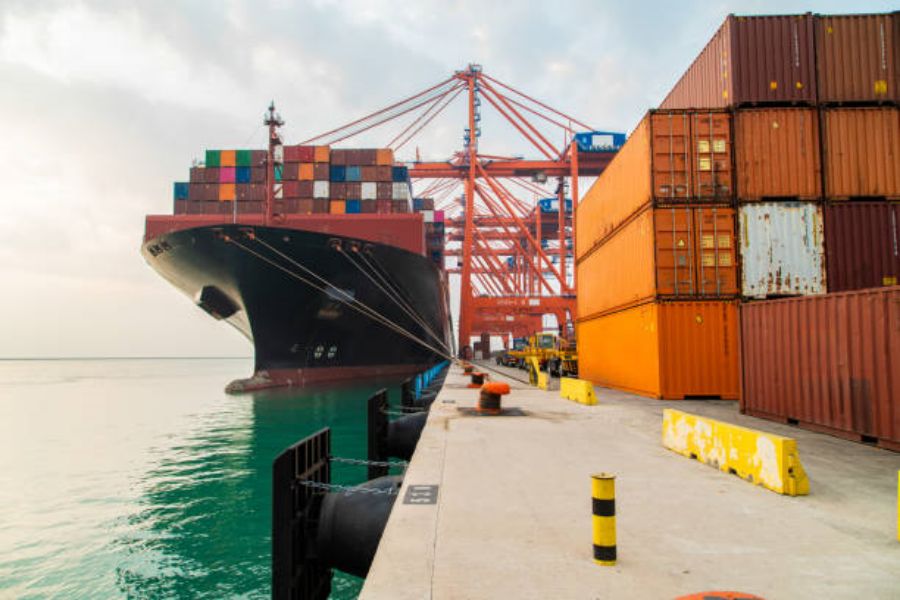Introduction: What is an Overhead Travelling Crane?
An overhead travelling crane, also known as a bridge crane or a suspended crane, is a type of crane that is used for lifting and moving heavy loads in industrial settings. This type of crane is designed to move along a runway system that is supported by a structure, usually located on the ceiling or overhead. Overhead travelling cranes are widely used in manufacturing, construction, and other industries where heavy lifting is required.
The Components of an Overhead Travelling Crane
Understanding the components of an overhead travelling crane is essential for its safe and efficient operation. The main components of an overhead travelling crane include:
- Bridge: The bridge is the horizontal beam that carries the trolley and hoist. It moves along the runway system.
- Runway System: The runway system consists of rails that support the bridge and allow it to move horizontally.
- Trolley: The trolley is the mechanism that moves horizontally along the bridge. It carries the hoist and is used to position the load.
- Hoist: The hoist is the lifting mechanism that is used to raise and lower the load. It is attached to the trolley and can be electrically powered or manually operated.
- Controls: The controls are used to operate the crane, including the movement of the bridge, trolley, and hoist.
The Advantages of Using an Overhead Travelling Crane
Overhead travelling cranes offer numerous advantages in industrial applications. Here are some of the key benefits:
- Increased Efficiency: Overhead travelling cranes allow for quick and efficient movement of heavy loads, reducing the time and effort required for manual handling.
- Improved Safety: By reducing the need for manual lifting and handling, overhead travelling cranes help to minimize the risk of workplace injuries.
- Flexibility: Overhead travelling cranes can be customized to suit specific requirements and can easily be adapted to different work environments.
- Increased Floor Space: Since overhead cranes are mounted on the ceiling or overhead, they do not occupy valuable floor space, allowing for more efficient use of the workspace.
- Higher Load Capacity: Overhead travelling cranes are designed to handle heavy loads, making them ideal for lifting and moving large objects.
Applications of Overhead Travelling Cranes
Overhead travelling cranes find use in a wide range of industries and applications. Here are some common applications of overhead travelling cranes:
- Manufacturing: Overhead cranes are commonly used in manufacturing facilities for lifting and moving heavy machinery, components, and finished products.
- Construction: Overhead cranes are essential in the construction industry for tasks such as lifting and placing steel beams, concrete panels, and other construction materials.
- Warehousing and Logistics: Overhead cranes are used in warehouses and logistics centers for efficient loading and unloading of heavy goods.
- Shipbuilding: Overhead cranes are crucial in shipyards for lifting and assembling large ship components.
- Mining: Overhead cranes are used in mining operations for lifting and transporting heavy materials and equipment.
Factors to Consider When Choosing an Overhead Travelling Crane
When selecting an overhead travelling crane for your specific needs, there are several factors to consider:
- Load Capacity: Determine the maximum weight that the crane will need to lift to ensure that the crane can handle the intended loads.
- Span and Height: Consider the distance the crane needs to cover and the height it needs to reach to ensure it can effectively operate in the given space.
- Control System: Choose between manual, semi-automated, or fully automated control systems based on your operational requirements.
- Safety Features: Ensure that the crane has appropriate safety features, such as overload protection, emergency stop buttons, and limit switches.
- Maintenance and Service: Consider the availability of spare parts and the ease of maintenance and servicing for the chosen crane.
Common Types of Overhead Travelling Cranes
There are different types of overhead travelling cranes available, each designed for specific applications. Here are some common types:
- Single Girder Crane: This type of crane has a single bridge beam and is suitable for light to moderate lifting applications.
- Double Girder Crane: Double girder cranes have two bridge beams and are capable of handling heavier loads.
- Gantry Crane: Gantry cranes are similar to overhead cranes but are supported by legs that run on wheels or tracks on the ground.
- Jib Crane: Jib cranes have a horizontal arm that is mounted to a wall or column, allowing for efficient lifting and rotation of loads within a limited area.
- Monorail Crane: Monorail cranes consist of a single rail or beam that carries the hoist and trolley, allowing for linear movement along the rail.
Maintaining and Inspecting an Overhead Travelling Crane
Regular maintenance and inspections are crucial for ensuring the safe and reliable operation of an overhead travelling crane. Here are some key maintenance and inspection practices:
- Lubrication: Regularly lubricate all moving parts of the crane to minimize friction and ensure smooth operation.
- Visual Inspections: Conduct visual inspections to identify any signs of wear, damage, or misalignment.
- Load Testing: Periodically test the crane's load capacity to ensure it remains within the specified limits.
- Electrical System Inspection: Inspect the electrical system, including wiring and controls, for any signs of damage or malfunction.
- Operator Training: Ensure that operators are trained and certified to operate the overhead travelling crane safely and efficiently.
Conclusion
Overhead travelling cranes are essential equipment in various industries, providing efficient and safe solutions for lifting and moving heavy loads. Understanding the components, advantages, applications, and maintenance practices associated with overhead travelling cranes is crucial for their successful implementation in industrial settings. By considering the specific needs and requirements of your operation, you can choose the right overhead travelling crane to optimize productivity and safety.

